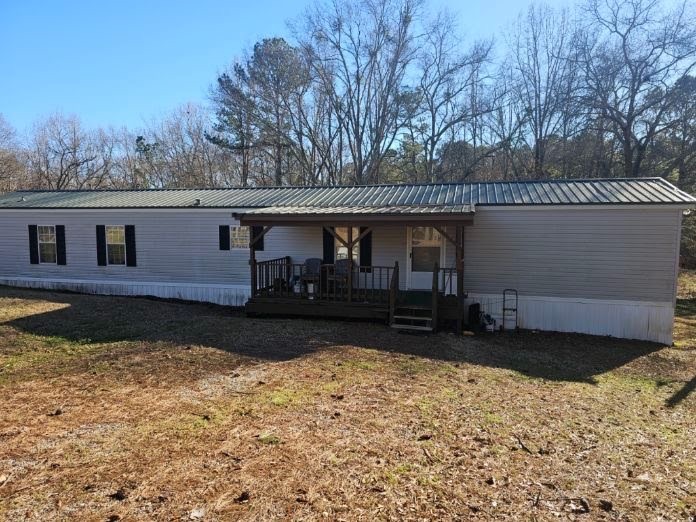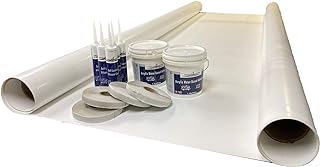Looking to upgrade your mobile home’s roof? Wondering how to enhance its durability and energy efficiency? Mobile home roof overs could be the answer you’ve been searching for. Imagine a cost-effective solution that not only protects your home but also adds value and curb appeal. Are you ready to discover the benefits of mobile home roof overs and transform your living space? Let’s dive into everything you need to know to make an informed decision for your mobile home.
Understanding Roof Over Basics
Definition
A roof over for mobile homes refers to adding a new layer of roofing on top of the existing one. This process helps enhance protection and insulation.
Benefits
Improved Insulation: A roof over can significantly increase energy efficiency by providing better insulation.
Extended Lifespan: By adding another protective layer, the lifespan of the roof is prolonged, reducing maintenance costs in the long run.
Key Components
The main components involved in a roof over project include:
Structural Framework: This provides the support for the new roofing materials.
Roofing Materials: Choosing high-quality materials is crucial for durability and weather resistance.
Ventilation Systems: Proper ventilation helps prevent moisture buildup and prolongs the life of the roof.
Assessing Your Roof’s Condition
Signs to Look For
Inspect your mobile home roof for weather damage such as rain or snow causing wear and tear. Look for noted issues like leaks, sagging areas, or missing shingles.
Importance of Inspection
A thorough examination is crucial before starting a roof over project. It ensures the structural integrity and value of your home by addressing potential problems early.
Regularly check for weather-related damages like water stains on ceilings, mold growth, or peeling paint. These are clear indicators that a roof over may be necessary soon.
Keep an eye out for signs of aging such as cracked caulking, rusted metal flashing, or loose roofing material. These issues can escalate if not addressed promptly.
Bullet list:
Inspect for weather-related damage.
Check for noted issues like leaks and missing shingles.
Look out for signs of aging such as cracked caulking and rusted flashing.
Steps to Assess
Begin by visually examining the roof from both inside and outside your mobile home. Look for any visible damage or irregularities that may indicate underlying issues.
Take note of any areas that seem compromised and document these observations. Consider consulting a professional roofer to conduct a more detailed assessment if needed.
Read more on our article Hail Damage Roof
Climate Considerations for Roof Overs
Roofing Materials
Different climates significantly influence the selection of roofing materials for a roof over. For instance, in areas prone to heavy rainfall or snow, metal roofs are preferred due to their durability and resistance to water damage.
Weather Patterns
It is crucial to consider the weather patterns and environmental conditions in your region before choosing a roofing material. For example, regions with high humidity levels may require materials that are resistant to mold and mildew growth.
Selecting the Right Option
When selecting the most suitable roofing option based on your climate, factors like UV exposure, wind resistance, and insulation properties need to be taken into account. For hot climates, cool roof coatings can help reflect sunlight and reduce indoor temperatures.
Read more on our article: Mobile Home Roof

Exploring Mobile Home Roofing Options
Roofing Materials
When considering mobile home roof overs, various roofing materials can be used. These include asphalt shingles, metal roofing, and EPDM rubber roofing.
Asphalt Shingles: One of the most common choices due to its affordability and ease of installation. However, they may not be as durable as other options.
Metal Roofing: Known for its longevity and durability, metal roofs are resistant to harsh weather conditions. On the downside, they can be noisy during rain or hailstorms.
EPDM Rubber Roofing: Offers excellent waterproofing properties and is relatively low-maintenance. Yet, it can be more expensive upfront compared to other materials.
Pros and Cons
Each roofing material has its own set of advantages and disadvantages. While asphalt shingles are cost-effective, they may require frequent maintenance. Metal roofing is durable but can be noisy. EPDM rubber roofing provides excellent waterproofing but comes at a higher initial cost.
Factors to Consider
When choosing the right roofing material for a mobile home roof over, consider factors such as durability, maintenance requirements, cost-effectiveness, and climate suitability.
Metal and Aluminum Solutions
Durability and Longevity
Metal and aluminum roofing solutions for mobile homes offer exceptional durability against various elements. These materials are resistant to leaks, ensuring a secure shelter for years. With proper maintenance, metal roofs can last for decades, providing long-term protection.
Aluminum roofs are lightweight yet robust, making them ideal for mobile homes. They withstand extreme weather conditions, including strong winds and heavy rain. Their resistance to corrosion ensures that they maintain their structural integrity over time.
Cost-Effectiveness and Energy Efficiency
Opting for metal or aluminum roofing proves to be a cost-effective choice in the long run. While the initial investment might be slightly higher than traditional options, the minimal maintenance requirements and extended lifespan offset the upfront costs. These roofs reflect sunlight, reducing indoor temperatures and lowering cooling expenses.
The energy efficiency of metal and aluminum roofs is remarkable. By reflecting heat away from the home, they help regulate indoor temperatures, reducing the reliance on air conditioning systems. This not only saves energy but also contributes to a more environmentally friendly living space.
Metal roofing can be shipped directly to your doorstep. Order here
Read more on metal roofs here: Metal Roof for Mobile Home: Cost, Installation & DIY Tips
Asphalt Shingles Benefits
Styles & Colors
Asphalt shingles offer a plethora of benefits for mobile home roof overs. One key advantage is the wide range of styles and colors available, allowing homeowners to choose the perfect aesthetic for their property.
Installation & Maintenance
The ease of installation is another major plus point for asphalt shingles. They are lightweight, making them easier to work with during the installation process. maintenance is straightforward, requiring minimal effort to keep the roof in top condition.
Cost-Effective & Durable
When it comes to cost-effectiveness, asphalt shingles are a top choice for mobile homes. Their affordability makes them an attractive option for homeowners looking to stay within budget while still ensuring quality roofing material. Moreover, despite being cost-effective, asphalt shingles are durable and can withstand various weather conditions over time.
Thermoplastic Polyolefin (TPO) Advantages
Superior Durability
TPO roofing, a modern choice for mobile homes, offers superior durability compared to traditional options. Its strong composition ensures long-lasting protection against harsh weather conditions.
With TPO roofs, mobile homeowners can enjoy peace of mind knowing that their roof is resistant to tears, punctures, and impacts. This durability translates to cost savings in maintenance and repairs over time.
Energy Efficiency
TPO roofing stands out for its energy-efficient properties, making it an excellent choice for environmentally conscious individuals. By reflecting sunlight and reducing heat absorption, TPO roofs help regulate indoor temperatures efficiently.
The energy efficiency of TPO membranes contributes to lower cooling costs during hot seasons. This benefit not only enhances comfort but also reduces the overall energy consumption of the mobile home.
UV Resistance and Reflectivity
One of the key advantages of TPO roofing membranes is their UV resistance. These membranes are designed to withstand prolonged exposure to sunlight without deteriorating, ensuring long-term performance.
Moreover, the reflective properties of TPO roofs help in maintaining a cooler internal environment by bouncing off a significant amount of solar heat. This feature is especially beneficial in regions with high temperatures or intense sunlight.
Order TPO roofing products by clicking here. They are shipped directly to your doorstep.
Completing Your Roof Over Project
Hiring Professionals
When considering a new roof over installation, it is crucial to hire experienced roofing crews. Professional contractors bring expertise and ensure the project is completed efficiently.
Step-by-Step Guide
Prepare: Clear the area around your mobile home of any obstacles like branches or debris that could hinder the project.
Inspect: Evaluate the condition of your original roof for any damages that need repair before installing the new roof over.
Measure: Accurately measure the dimensions of your roof to determine the amount of materials needed.
Installation: Begin by laying down insulation and then proceed with installing the new roof over materials.
Seal and Secure: Properly seal all seams and edges to prevent leaks and secure the new roof tightly.
Maintenance Tips
Regularly inspect your roof over for signs of wear and tear, especially after severe weather conditions like strong winds or falling branches from trees.
Keep gutters clean to prevent water buildup that can damage your newly installed roof over.
Final Remarks
You’ve now gained a comprehensive understanding of mobile home roof overs, from the basics to assessing your roof’s condition and exploring various roofing options like metal, aluminum, asphalt shingles, and TPO. By completing these sections, you’re well-equipped to embark on your roof over project confidently. Remember to consider climate factors and choose the solution that best suits your needs.
Now that you have the knowledge and insights required, it’s time to take action. Assess your roof, weigh the benefits of each material, and make an informed decision. Your mobile home deserves a sturdy and reliable roof that can withstand the elements. Get started on your roof over project and give your home the protection it needs.
Frequently Asked Questions
What are the benefits of opting for a roof over project for my mobile home?
By choosing a roof over project, you can enhance energy efficiency, improve insulation, increase property value, and extend the lifespan of your mobile home’s roof. It provides cost-effective protection against weather elements and enhances the overall aesthetics.
How do I assess if my mobile home roof needs a roof over?
Inspect for signs of wear like leaks, cracks, or mold. Evaluate the age of your current roof and its ability to withstand harsh weather conditions. Consider consulting with a roofing professional to determine if a roof over is suitable for your mobile home.
What are some climate considerations to keep in mind when planning a roof over for my mobile home?
Consider factors like temperature fluctuations, precipitation levels, wind speed, and UV exposure in your region. Choose materials that offer durability against specific climate challenges to ensure long-lasting protection for your mobile home.
What are the advantages of using Thermoplastic Polyolefin (TPO) for a mobile home roof over?
TPO roofing is known for its energy efficiency, durability, and resistance to UV rays and chemical exposure. It offers excellent flexibility and low maintenance requirements, making it a popular choice for mobile homes seeking long-term performance and cost-effectiveness.
How long does it typically take to complete a roof over project for a mobile home?
The duration of a roof over project can vary based on factors like the size of your mobile home, weather conditions during installation, and the chosen roofing materials. On average, a professional installation team can complete the project within a few days to a couple of weeks.
You may be interested in these articles as well:
Prevent Snow Mobile Home Roof Damage: Tips




